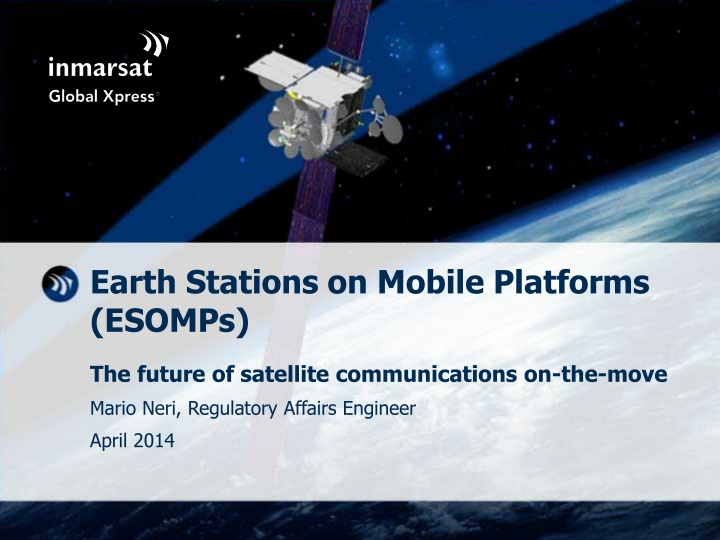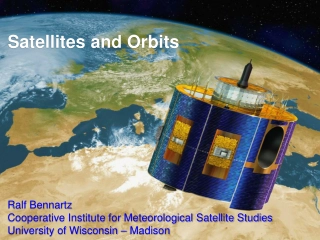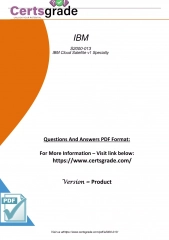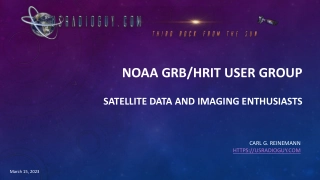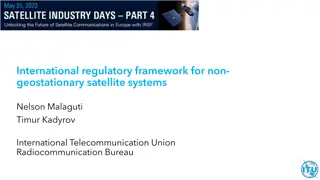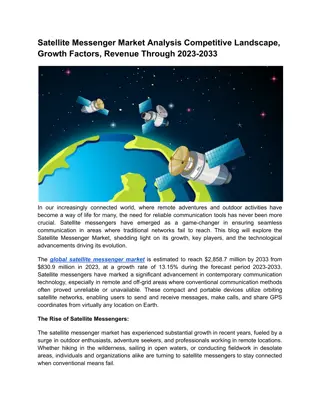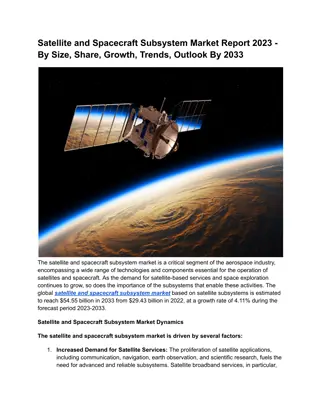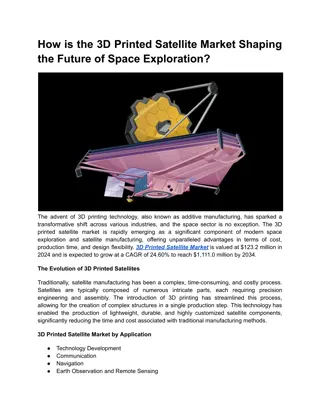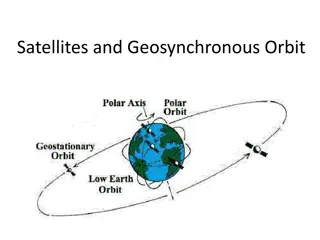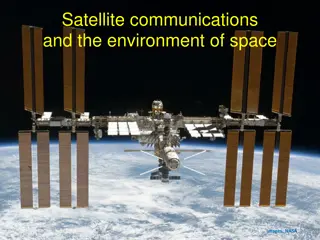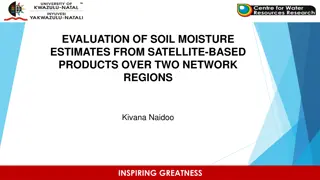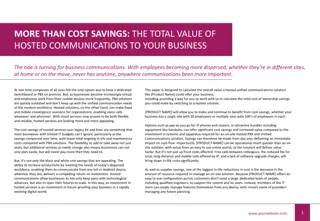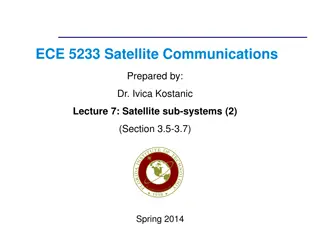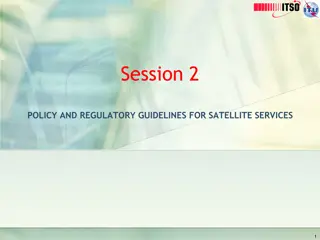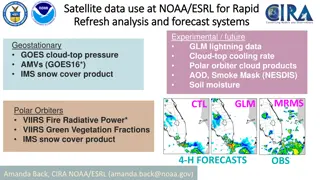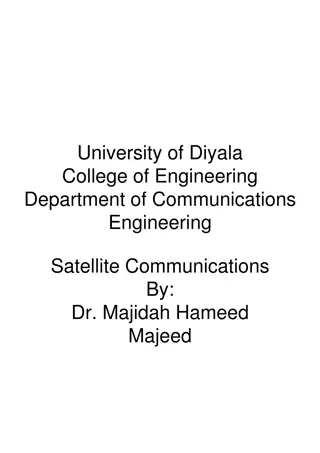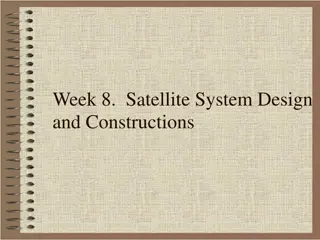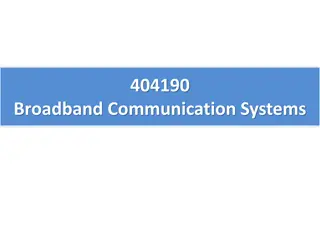The Future of Satellite Communications: ESOMPs Explained
Discover the innovative Earth Stations on Mobile Platforms (ESOMPs) and their advantages over typical Mobile-Satellite Service systems. Explore why ESOMPs are essential for modern applications, how they comply with technical provisions, and their role in protecting spectrum resources. Learn about GSO ESOMPs operating in FSS frequency bands and the solutions for sharing spectrum with FS networks.
Download Presentation

Please find below an Image/Link to download the presentation.
The content on the website is provided AS IS for your information and personal use only. It may not be sold, licensed, or shared on other websites without obtaining consent from the author.If you encounter any issues during the download, it is possible that the publisher has removed the file from their server.
You are allowed to download the files provided on this website for personal or commercial use, subject to the condition that they are used lawfully. All files are the property of their respective owners.
The content on the website is provided AS IS for your information and personal use only. It may not be sold, licensed, or shared on other websites without obtaining consent from the author.
E N D
Presentation Transcript
Earth Stations on Mobile Platforms (ESOMPs) The future of satellite communications on-the-move Mario Neri, Regulatory Affairs Engineer April 2014
Why ESOMPs? People want to use these! Broadband connectivity: anytime, anywhere 2
Why not typical MSS systems? What s wrong with them Typical Mobile-Satellite Service systems are not suitable for modern applications: Limited amount of spectrum (2x 41 MHz) limited amount of available throughput; User Terminals are equipped with omni-directional antennas no spectrum sharing in the same geographical area; No obligation to comply with specific eirp spectral density limits sharing with other satellite networks is difficult. 3
GSO ESOMPs operating in FSS frequency bands are then THE SOLUTION! 4
Which technical provisions should ESOMPs comply with? 5
ESOMPs and FSS networks How ESOMPs will protect FSS space-to-Earth direction: ESOMPs can operate with typical FSS downlink pfd levels; Earth-to-space direction: ESOMPs shall: Comply with the same off-axis eirp spectral density limits as those contained in Recommendation ITU-R S.524-9; Point and track the correct satellite only; Take into account any unwanted and temporary mis-pointing and act accordingly; Be under the control of a Network Control and Monitoring Centre (NCMC). 6
ESOMPs and FS networks How ESOMPs will protect FS If coordinated, typical FSS can share the spectrum with FS, therefore the same should apply to ESOMPs SF- series ITU-R Recommendations available; Scenarios in which ESOMPs would have to share spectrum resources with FS are: Neighboring countries allowing terrestrial services in the same band; ESOMPs operating in national/international waters/airspace. What are the solutions? Generic provisions (e.g. coordination threshold based on pfd); Bi-lateral coordination and specific provisions. 7
Which regulatory framework for ESOMPs? 8
ESOMPs and the RR Learning from the past ESOMPs are not a new concept in the Radio Regulations; No. 5.547A allows for Earth Stations on Vessels to operate in the C- and Ku-bands; No. 5.504A allows for AES to operate in the FSS in the Ku- band; Both approaches are subject to certain provisions to make sure: That existing and future FSS systems are protected; That harmful interference is not caused to FS systems eligible to be protected. 9
ESOMPs and the RR A look to the present Since WARC-92, No. 5.526 allows for networks which are both in the FSS and MSS to include links between earth stations at specified or unspecified points or while in motion; Only recently a new class of e/s has been included in the BR IFIC: UC : earth station while in motion associated with a space station in the fixed-satellite service in the bands listed under provision No. 5.526. Administrations can now coordinate and notify ESOMPs that communicate with the FSS based on existing criteria for FSS links in the bands 19.7-20.2 GHz and 29.5-30 GHz, as appropriate; ESOMPs are not operating under 4.4 in those bands covered by provision No. 5.526. 10
ESOMPs and the RR Heading towards the future What else should be done? Finalise the works of WP 4A on the Draft New Recommendation on ESOMPs; Discussions on some limitations within No. 5.526 are expected to take place in the ITU. 11
To conclude 12
The role of the Radio Regulations Facilitating new technologies They need to evolve, to allow a flexible and efficient use of the spectrum resources; Regulations should not be an obstacle but encourage new technologies to be promptly and easily available. 13
THE END! 14
